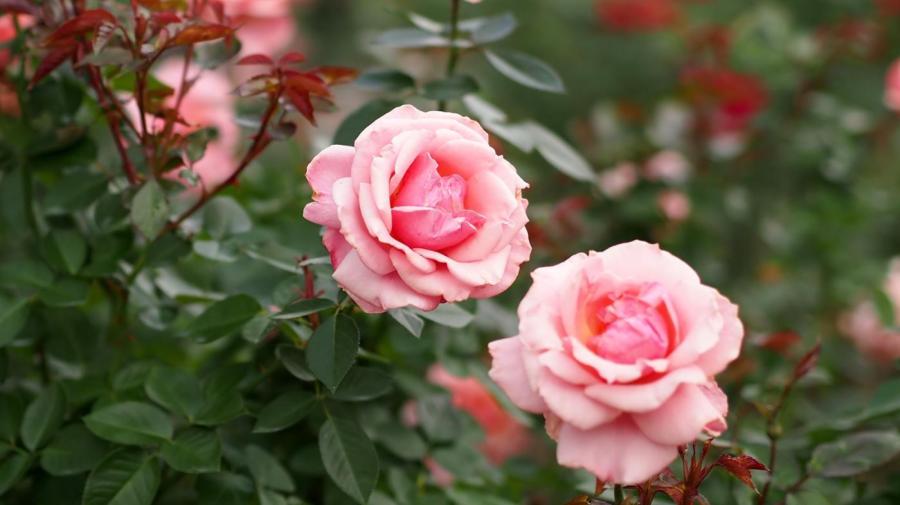How Do Roses Reproduce?

Roses reproduce sexually, via their flowers. They are angiosperms, flowering plants which produce fruit that surrounds their seeds. In the case of roses, this fruit is called a rose hip.
Rose reproduction via flowers is similar to how other angiosperms reproduce. Male and female flowers develop at the tips of new branches in late spring. Male flowers contain pollen, and female flowers contain a receptacle for the pollen called an ovule. When bees or other insects transfer the pollen from one kind of flower to the other, the pollen joins itself to egg cells inside the ovule, and the combined cell is considered fertilized. These fertilized cells develop into a rose hip formed at the base of the flower. Birds eat the rose hips, and their droppings provide nutrition for the seeds within the rose hip to germinate.
Roses may also be propagated via cuttings from the main plant. These cuttings must include root stock. When placed in the ground, the plant will grow anew. Cuttings with rootstock are clones of the parent plant and allow for the commercial availability of strong and beautiful plants with precise biological characteristics.
Another type of propagation used by gardeners is grafting. Grafts are stems cut from the parent plant and fused with rootstock from a different plant. Grafts can give fragile yet desirable plants the heartiness of a stronger yet less desirable variety.
Roses may also reproduce themselves via sending out roots, either from the main roots underground or from branches which come in contact with the soil. The plants resulting from both methods are also clones of the parent plant.





